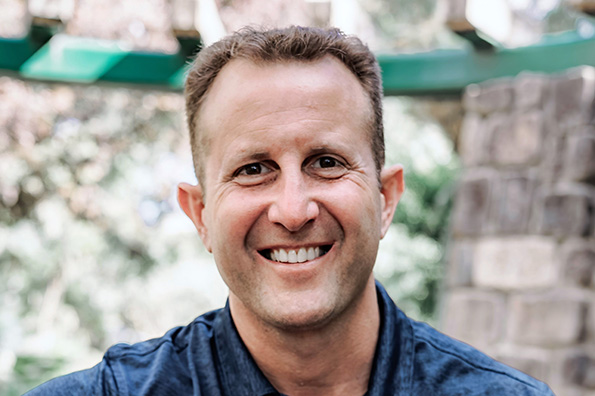

Deep Dive: Protect and profit
In food tech, writes Lloyd Fuller, innovation alone isn’t enough – strategic IP protection attracts investment, safeguards market position, and drives long-term success. Here, intellectual property experts and food tech entrepreneurs come together to reveal how to get it right
As the food technology sector grows more competitive, a few short words from Paul Shapiro, CEO & Co-founder of the Sacramento, California-based The Better Meat Co., serve as a pointed reminder that intellectual property (IP) is more than just a legal safeguard – it’s a strategic asset. “IP really does matter,” he remarked during a recent Protein Production Technology International webinar, Using IP to Attract Investment and Build Business Value.

The panel discussion, which took place late last year, brought together investors, IP experts, and industry leaders to explore how a well-executed IP strategy can strengthen market position and unlock new opportunities.
Over the course of the hour-long debate, one message stood out: in today’s innovation-driven landscape, a strong IP portfolio isn’t just an advantage – it’s essential. Food-tech companies seeking to secure investment, protect market share, and ensure long-term success must consider IP a fundamental part of their business strategy.
Financial course
That perspective was echoed by Kasia Gil, Principal of Sustainable Food Systems at ICOS Capital, although she stresses that investment decisions need to be holistic in nature. “IP is not the sole factor. Other elements, such as a solid business plan, innovative products, and a strong team, are equally important,” she notes. “But at ICOS, we do recognize that IP plays a crucial role.”
Building on that point, Gil underscores the importance of aligning IP with broader business objectives. “A well-crafted IP strategy is essential, but it must align with the company’s overall business strategy to be truly valuable,” she feels. Without this alignment, even a robust IP portfolio risks being underutilized or misaligned with commercial goals.
Beyond its strategic role, a strong IP portfolio directly contributes to business success in measurable ways. “It not only provides a competitive advantage but also enhances a company’s valuation and creates additional revenue opportunities through licensing and partnerships,” Gil continues. “Moreover, a strategically developed
IP portfolio adds significant value, particularly when considering exit opportunities.”
What matters to us is how the company envisions developing its IP portfolio over time – particularly its impact on business execution and potential for a successful exit

However, investors don’t just assess the current state of a company’s IP – they also evaluate its long-term vision. “From an investor’s perspective, IP is important, but it must be part of a broader strategic vision with a clear outlook on how it will perform over time,” Gil explains. In other words, a company’s IP strategy should not be static; it needs to evolve alongside its growth and market positioning.
Part of this strategy involves determining what to patent and what to keep as a trade secret. Gil highlights this delicate balance, warning that “companies often protect certain technologies as trade secrets, which is crucial – as not everything should be publicly disclosed. Ensuring freedom to operate is a key factor in mitigating risks and attracting future buyers or investors”.
Investors, she says from personal experience, are particularly interested in how companies plan to leverage their IP for growth. “We want to understand the company’s roadmap. The market opportunities. How can its IP generate additional revenue? Who are the potential buyers or partners?” she says. Such insights help investors identify possible exit strategies, reinforcing the idea that IP is not just about protection – it’s about business viability.
For venture capitalists, specifically, the focus shifts from what IP a company holds today to how it plans to develop its portfolio in the future. “As a venture capitalist, we focus more on a company’s IP strategy and its long-term trajectory rather than just the IP it currently holds,” Gil reveals. “What matters to us is how the company envisions developing its IP portfolio over time – particularly its impact on business execution and potential for a successful exit.”
Yet, despite the clear benefits of a well-structured IP strategy, many startups fail to approach it with the seriousness it demands. “What we often find is that many startups underestimate how costly and time-consuming it is,” Gil observes. “This often results in a lack of a clear, well-defined strategy.”
Her advice to entrepreneurs is direct. “Simply put, always build your IP strategy in parallel with your business – it’s essential for long-term success. IP should never be left to chance; it must be strategic. Don’t try to patent everything – focus on key areas with a clear vision of your long-term goals. And most importantly, protect your trade secrets – don’t share everything with everyone.”
Expert insights
Another member of the six-strong panel, Dr Eran Noah, Founder of NOAH IP, reinforces the importance of strategic IP planning, echoing many of Gil’s points. “It’s crucial to be well-prepared when meeting investors,” he agrees. “It’s even more important to demonstrate that you are IP-minded – that you’ve put real thought into your IP strategy.”
Like Gil, Noah warns against a ‘spray-and-pray’ approach, urging startups to be selective in their IP filings. “Be strategic about where you invest your time, money, and effort in IP protection,” he advises. “Focus on protecting your core technologies. Quantity doesn’t equal quality. What matters is having fewer but highly strategic filings. You need to differentiate yourself from competitors by patenting the ‘delta’ – the unique aspects that make your company stand out.”
Beyond selecting what to patent, Noah, who also mentors entrepreneurs through the Global Good Food Institute Mentor Program, stresses the importance of thoughtful planning. “One of the key pieces of advice I give is don’t rush! Instead, take the time to strategize – identify your core technologies and distinguish between must-haves and nice-to-haves. Resources are always limited, so focus them on protecting the IP that safeguards your core technology.”

Unsurprisingly, given his profession, Noah also emphasizes the value of expert guidance, particularly from those with experience in food tech or alternative proteins. “An expert in your field can help you understand your business, your technologies, and your IP potential – so you can implement a strategy that maximizes your value and long-term success,” he says.
Common pitfalls
Dr Jennifer Bailey, Partner at the patent and trademark attorney firm HGF (the sponsor of the webinar), built on this discussion by highlighting another critical aspect of IP strategy – timing and data. “One of the most important do’s is actually a don’t… don’t disclose your invention before filing your application!” she warns. “Even casually hinting at an invention can be risky. If you’re unsure how much you can say, seek advice before discussing your work – even in informal settings.”
Beyond confidentiality, Bailey stresses the need for early engagement with patent attorneys. “This is important to determine what aspects of your technology you want to protect and to align this with your commercial strategy,” she explains. “This discussion should also include whether to keep certain elements as trade secrets and whether you have enough supporting data. Your attorney can advise on whether you need further experiments before filing or whether you can proceed with some filings while gathering additional data for others.”
However, filing at the right time is just as important as having the right strategy. Bailey cautions against both premature and delayed filings. “Timing is a critical factor
– filing too early without sufficient data can weaken your application, while waiting too long increases the risk that someone else will file first,” she says. “The key takeaway is to seek advice early on. A well-planned strategy increases the likelihood of securing strong IP protection.”

Bailey’s colleague at HGF, Kerry Rees, Protein Production Technology International’s resident IP expert, expands on the importance of anticipating competitive responses. “You have to think beyond your core concept,” he suggests. “Consider how competitors might design around it. They will aim to draft claims that not only cover your main discovery but also create a broader protective barrier to prevent obvious workarounds.”
Beyond strategic patent drafting, Rees reinforces the need for confidentiality. “If you need to speak with investors or other parties before filing your patent applications, always have NDAs (Non-Disclosure Agreements) in place beforehand,” he continues. Ensuring proper safeguards from the outset helps prevent premature disclosures that could compromise a company’s competitive advantage.
The importance of data
Confidentiality alone, however, is not enough – patents must also be supported by strong data to be enforceable. In biotechnology, where innovation often hinges on scientific rigor, robust experimental evidence is crucial. Without it, patents risk rejection or invalidation, diminishing their value in securing investment and market exclusivity. Bailey concurs with this point. “One of the biggest issues is not having sufficient data – and this is especially critical in the biotechnology field. The more experimental data you can provide across the range of applications you want to protect, the better your chances of securing broader coverage.”
This need for supporting data creates an ongoing tension between disclosure and data collection. Rees says that finding the right balance is key – too little disclosure can weaken a patent’s enforceability, while too much can expose valuable know-how to competitors before full commercial protection is in place. “There’s always a balance between the pressure to disclose and the need to gather enough data to support a strong patent application,” he notes. “The more supporting data you have from the outset, the better. A patent attorney can guide you on what scope of protection your data will realistically support. It’s also crucial to ensure your patent applications align with your business goals. That’s why you should focus on protecting your core inventions – the aspects that truly add value to your business.”
Bailey further reiterates that a proactive approach to IP strategy is essential, particularly in biotechnology, where innovations often have multiple applications and commercialization pathways. By considering all potential variations of an invention early on, companies can craft broader, more resilient patent claims that guard against design-arounds and competitive threats. Regularly revisiting the IP strategy is equally important, ensuring alignment with evolving business objectives, market conditions, and regulatory landscapes. “A well-maintained IP strategy doesn’t just protect – it maximizes both commercial value and long-term market security,” she concludes.
Entrepreneurial experiences and best practices
Shifting from the perspectives of IP experts to those of industry entrepreneurs, The Better Meat Co.’s Paul Shapiro provides a compelling example of strategic IP in action. “A patent we were recently awarded [US 12,127,575 in November 2024] relates to the creation of a shelf-stable, no-cold-chain-needed granule of mycelium,” he shares. “We’ve developed protection covering a variety of species. We have broad patent coverage surrounding the entire Neurospora genus.”
Our focus isn’t on accumulating patents for the sake of it; it’s about creating innovations that are truly worth protecting
Beyond securing intellectual property, Shapiro discusses the broader market implications of this innovation. “When you look at mycoprotein today, it requires freezing, which restricts distribution. The innovation we’ve developed requires no cold chain and can be shipped anywhere in the world at low cost and incorporated into any product application,” he explains.

This breakthrough, he notes, has significantly expanded The Better Meat Co.’s market reach. “Our biggest partners aren’t alternative meat companies – they’re conventional meat companies looking for ingredients to hybridize their products,” he says. “Our mycelium reduces saturated fat, cholesterol, and total calories while delivering a better-tasting product.”
Achieving this level of functionality, however, required overcoming considerable technical challenges. “Making shelf-stable mycelium isn’t as simple as it sounds,” Shapiro admits. “Achieving a dry, shelf-stable state that instantly rehydrates took extensive experimentation. Today, we ship our product worldwide because having a shelf-stable ingredient dramatically simplifies logistics.”
Beyond its practical benefits, strong IP also serves as a signal of a company’s commitment to both innovation and protection. “Having strong IP signals that a company is serious about both innovation and protecting its technology,” he states. “We are inventing new food technologies that enable novel food experiences.” He further clarifies the company’s broader mission. “Our goal is to produce the most cost-effective protein on the planet. Our focus isn’t on accumulating patents for the sake of it; it’s about creating innovations that are truly worth protecting.”
Shapiro also shares a first-hand example of the value of his company’s patents. “"The value of our patents is evident in the fact that another startup attempted to claim them as their own. The court ruled in our favor,” he reveals. While acknowledging that patents alone do not determine success, he pointed out the unique nature of food technology. “I don’t believe patents are the only path to success. However, food technology companies are different. We are innovating on how to grow food inside bioreactors.”
He concludes with a reflection on the complexities of the patent landscape. “I’ve found that IP really does matter. The amount of prior art in this space is enormous. In our case, working with patent attorneys who have deep knowledge of this space has been invaluable.”
.jpg)
Branding
Severin Eder, Co-founder of Catchfree, provides insight into how a startup navigates IP in the alternative seafood sector. “For us at Catchfree, our key differentiator is our technological platform and continuous innovation,” he explains. “Early on, we recognized the importance of an IP strategy that complements our business vision. Our initial focus was on aligning our IP strategy with our development phase. As we progress, we then adapt our roadmap for commercialization in line with our IP approach.”
Beyond patents, Eder also underscores the significance of branding in a fast-moving consumer market. “Branding-related IP is just as critical,” he stresses. “Our strategy started with a strong focus on trademarks, layering on technological patents over time.” This phased approach allowed Catchfree to establish brand recognition while strategically securing technological protections as the company scaled.
He also reflects on how investor expectations have evolved in the sector. “Even large institutional investors are not necessarily focused on securing patents immediately in the food sector,” he points out. “They recognize that much of the industry’s innovation is initially safeguarded through trade secrets. For us, the best approach has been a sequential IP strategy. Instead of patenting entire processes, we focus more on specific process steps and operations.” This more targeted approach ensures that Catchfree protects the most valuable elements of its technology while maintaining flexibility in its commercialization strategy.
Navigating these decisions, however, has been a learning process. “One of the biggest challenges we faced was determining what aspects of our technology were both worth patenting and actually patentable,” Eder admits. “We’ve shifted our focus to identifying the key processes that truly drive our innovation. This approach ensures we maintain control over our technology.”
For us, the best approach has been a sequential IP strategy. Instead of patenting entire processes, we focus more on specific process steps and operations
Beyond protecting innovation, Eder agrees with Gil, Noah and Bailey in the importance of a comprehensive IP strategy and the value of building strong networks. “It’s really about having an overarching IP strategy that you feel safe and confident with,” he says. “First, building a strong network early on. Second, partnering with specialized experts in IP, capital, and trademarks. This gives you the freedom to focus on long-term development.”

Bailey reinforces the importance of aligning IP strategy with technological advancements. “It’s about ensuring that your IP strategy aligns with your technology – not the other way around,” she asserts. “If you have a truly novel and inventive technology, you’re far more likely to secure strong patent protection.”
Rees, meanwhile, concludes with a call for strategic focus. “Always keep asking ‘why’,” he advises. “Why am I filing this patent application? If it doesn’t align with your business plan, then question whether it’s necessary at all. Focus on the core aspects of your innovation and use your IP budget wisely.”
If you have any questions or would like to get in touch with us, please email info@futureofproteinproduction.com







